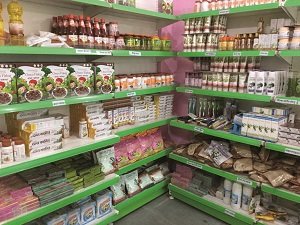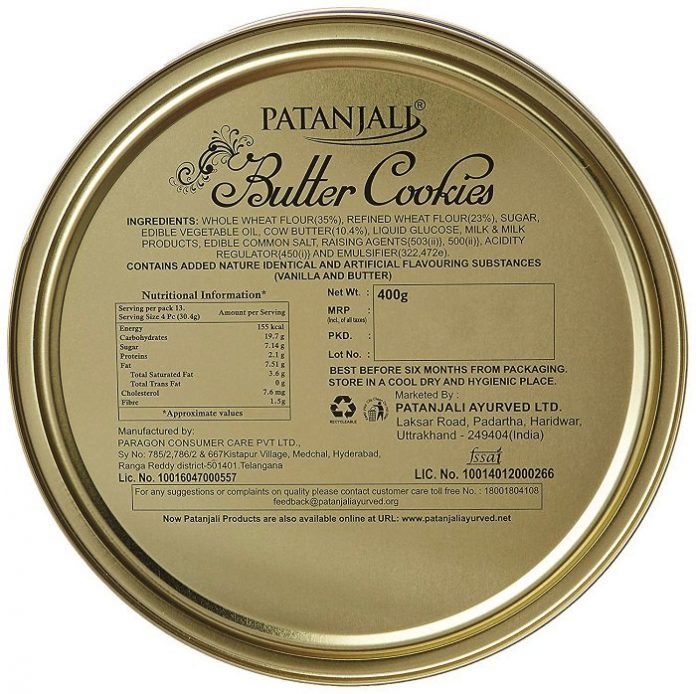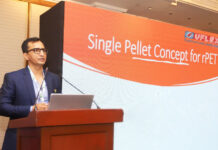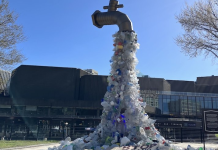Now that the dust has settled after the storm created by the Plastic Waste Management Rules (PWMR) 2016, with the issue of the new regulations under PWMR 2018, it is probably a good time to initiate some crystal-ball gazing to try and assess which way the Indian packaging scenario is headed.
The new PWMR 2018 has almost totally restored the status quo that existed before the release of the contentious (and totally impractical) PWMR 2016 in that life continues as usual with almost all the packaging systems and materials being rendered ‘usable’ and legitimate. The extended producer responsibilities laid down in PWMR 2016, however, continue to be in force. Although no brand owners have taken any positive and relevant steps to fulfill these responsibilities, life is otherwise normal and the same as what it used to be before March 2016. Let us start the analysis by revisiting the circumstances in which we operate.
Conditions that influence packaging
There are a few basic considerations that have a significant influence on how packaging is designed and used. The major factors that affect the scenario can broadly be classified as below:
1 Ambient conditions – temperatures, relative humidity, other conditions.
2. Supply chain structure – retailing, storage, distribution, eCommerce.
3. Shelf-life requirements.
4. Consumer acceptance/preferences.
5. Sustainability considerations.
6. Legislation.
7. Cost-effectiveness.
Let us first look at each of these as they exist today.
Ambient conditions
To say that ambient conditions in India are adverse for packaged products is an understatement; they are positively hostile. The major conditions that need to be looked at are temperatures and relative humidity. Temperatures range from sub-zero to over 50 degrees centigrade during the life-cycle of a product. What is worse is that these extremes can be in effect across the length and width of the country at the same time. (It is not possible to design and implement regionspecific packaging systems and so one standard system has to be able to counter both extremes.)
Likewise, relative humidity can go up to almost 100% and extreme conditions can, again, exist at the same time across the supply chain. While low temperatures and RH do not affect product spoilage and moisture/gas transmission rates of packages and materials very much, it is well known that these are exacerbated significantly by higher temperatures and RH levels. A package in India is, therefore, expected to perform satisfactorily at almost twice the level of its equivalent in other countries with more temperate ambient conditions.
Supply chain structure
While there has been substantial improvement in elements of supply chain infrastructure in recent years, they are by no means adequate yet. Handling systems during transportation and distribution are still not optimal and they are quite severe on products. Automation and reduction in trans-shipment has a long way to go. Moreover, specialized distribution systems like cold chains and controlled temperature storage are still not fully developed. The one supply chain area where things have changed quite a lot is retailing systems. We have progressed a great deal from distribution primarily through neighborhood ‘kirana’ stores a few years ago to self-service departmental stores. In the latest scenario, the package design has become much more important to grab the consumer’s attention and
make him look at it to influence a sale. eCommerce has also caught on to an extent and on-line distribution will also grow significantly over the next decade.
Shelf-life requirements
This is the most important criterion for package design. Given the vast areas that need to be serviced and with distribution systems still having some way to go, shelf-life requirements are normally more extended in India as compared to both smaller or more developed economies. These could range from a few days (for products like fresh milk, bread, fresh fruits and vegetables) to a couple of years (for many retail packs and pharmaceutical/healthcare formulations and devices). What is imperative is that the packaged product has to remain ‘acceptable’ during the longest time that it remains on the shelf or in use at consumers’ premises during use. Most packaged products in India require high levels of moisture/gas/ light barrier to deliver extended or even adequate shelf-life.
Consumer acceptance/preferences
The average consumer is now much better informed and, while there is no major resentment against any particular system, there are certainly more clearly defined preferences and there is more awareness of convenience, safety, health and sustainability requirements.
Sustainability
Brand owners and consumers today are more conscious of sustainability implications. While nobody is prepared to pay more for a more sustainable package, there is certainly a marked preference for a package that is perceived as being more sustainable. The brand owners, in particular, are more eager to establish products/packages that have a lower carbon footprint so that they can trumpet this fact and gain publicity. There is, for example, a feeling of angst (quite unjustified and not based on clear scientific analysis, in my opinion) against plastics and it has become very fashionable for the press to appear ‘green’ without really stating or identifying suitable practical cost-effective alternatives. Nevertheless, more and more large corporations are taking the oath to use more recycled content in their packages.
Legislation
The powers that be are trying to bring about legislation to protect the interests of the common man. The FSSAI has taken on a commendable task to try and regulat /standardize packaging to make it safe for all products across the board. They are in the process of issuing draft guidelines that will be converted into mandates after the receipt of subsequent industry and consumer feedback. These draft guidelines were due to be notified by the end of September 2018 and could come through any time now.
Cost-effectiveness
This is the inviolate bottom line. At the end of the day, brand owners will use only the most cost-effective systems that meet statutory requirements.
Comparative values of different packaging systems
Packaging systems are broadly classified as follows depending on their design and characteristics:
1. Rigid systems – like cans, bottles, jars, trays, crates, chests, tanks, etc.
2. Semi-rigid systems – like mono cartons, lined cartons, thermoformed packages, corrugated cartons, solid fibreboard, etc.
3. Flexible systems – like pouches, sachets, bags, labels overwraps, etc. that consist totally of flexible materials.
Many packages may use one or more of the above in combination. Packaging is also usually used for different purposes that fall into three broad categories.
1. Retail or primary package.
2. Intermediate package (for unitizing or aggregating products for distribution/ storage or display).
3. Transport package (like pallets, shrink and stretch wrapping, for containerization, etc.).
 Let us now look at broadly how these systems compare. Rigid systems require a high level of material usage for structural requirements and to make them rigid. The wall thicknesses used cannot be reduced although they actually provide much higher barriers to moisture and gas than products require. Empty containers have to be transported and stored using a lot of space (transporting/storing air) and, therefore, prove very expensive with low cube utilization. Although they are very effective packages, they prove economical only for bulk packages and users go in for them only when absolutely necessary (like packaging of liquids or highly carbonated products).
Let us now look at broadly how these systems compare. Rigid systems require a high level of material usage for structural requirements and to make them rigid. The wall thicknesses used cannot be reduced although they actually provide much higher barriers to moisture and gas than products require. Empty containers have to be transported and stored using a lot of space (transporting/storing air) and, therefore, prove very expensive with low cube utilization. Although they are very effective packages, they prove economical only for bulk packages and users go in for them only when absolutely necessary (like packaging of liquids or highly carbonated products).
Most semi-rigid systems do not provide adequate barrier. The only exceptions are lined cartons and high-barrier thermoformed systems. Therefore, they have to be used along with systems like flexible packaging that provide the basic barrier the products need. However, they come in either knocked-down condition or as rolls/sheets that are economical to transport and store.
Flexible packages are the most efficient in terms of material usage and are consequently very light-weight. What is more, material usage can be optimized (rigid and semi-rigid packs cannot really be optimized as one’s choice is restricted by industry standards like can and bottle sizes). They also come in the form of either flat pouches/bags or as rolls/sheets that are converted into packages on form-fill-seal end-of-line packaging equipment. They are also very efficient in terms of transportation and storage both as inputs for packaging operations and as light-weight packages for distribution and sale. Barriers of flexible materials can be substantially enhanced by using conversion processes like barrier, metallization and coating. Because of all these advantages they are very high on the sustainability index and have by far the lowest carbon footprint. However, the used package or post-consumer waste is usually difficult to re-use or recycle. Nevertheless, they still score very high because of the low material usage; low usage of input resources; low transportation and storage costs; and, low energy required to produce them.
By and large, brand owners prefer to use flexible systems and will opt for alternatives only if no flexible system meets packaging criteria or because of strong consumer preferences (like beverage cans or aerosols for dispensing products) because of the convenience and much lower costs that flexible packages deliver.
Comparison of packaging materials
The major basic materials used in packaging are:
1. Metals – tinplate (steel), aluminum
2. Paper and paperboard
3. Glass
4. Plastics/polymers
5. Wood
6. Fabrics – hessian, cotton
Each of these can be used either by itself or in combination with other materials. Let us now review the comparative properties and costs of each material.
Metals
 Rigid packaging based on metals is very expensive in India. For example, a oneliter tinplate container can cost as much as two-and-a-half times as much as a one-liter flexible pouch even when the latter incorporates the highest barrier (and, therefore, the most expensive) materials. Again, there is not enough avail-ability of aluminum beverage cans for them to be made available at competitive prices. Some aluminum is also used as flexible aluminum foil but it costs much more than plastic film alternatives.
Rigid packaging based on metals is very expensive in India. For example, a oneliter tinplate container can cost as much as two-and-a-half times as much as a one-liter flexible pouch even when the latter incorporates the highest barrier (and, therefore, the most expensive) materials. Again, there is not enough avail-ability of aluminum beverage cans for them to be made available at competitive prices. Some aluminum is also used as flexible aluminum foil but it costs much more than plastic film alternatives.
Paper and paperboard
Indian paper and paperboard generally deliver much lower strength, rigidity and compactness than their international equivalents because of the non-availability of pulp made from long-length fiber (like pulp made from coniferous wood). The Indian paper industry has to perforce predominantly use pulp made from hardwoods, agricultural residue like bagasse or recycled low-fiber paper. Some amount of long fiber waste paper or pulp is imported but this is used mainly for high-strength applications like sack kraft or corrugated cartons although there is a marked increase in the local manufacture of high quality white boards with a mix of virgin imported and local pulp based on sustainable wood varieties that have been developed.
The other major disadvantage that paper suffers from is that it does not easily provide the high oxygen and moisture barriers that are required for adequate shelf-life (even when coated or laminated to plastics). Thus, for high barrier applications, one has to use lined cartons that use an inner liner of flexible materials. Monocartons and corrugated packaging are also very expensive and are used only when a certain amount of rigidity is required for transport or for aestheti purposes.
Glass
Glass is a very dense and heavy material. It is also highly breakable leading to significantly higher transit damage during distribution and storage. Although it is excellent in terms of barrier and direct contact with even the most sensitive products, it works out to be very expensive despite its total recyclability. We also do not have good high-strength glass bottles (like single-trip bottles) available here. Therefore, it is used only for highly carbonated products like beer and beverages (returnable and reusable bottles) or for multi-dose and expensive products like liquor and industrial chemicals.
Plastics/polymers
These are growing at a very high rate in rigid, semi-rigid and flexible systems. Almost 55% to 60% of local plastics production goes into packaging applications, although the world-wide usage is about 40%. They have excellent barrier properties which can be further enhanced by good barrier metallization or coating. They can be combined as coextrusions for a wide variety of applications.
A big plus is that the locally available plastic films and multilayered structures are as good as those anywhere in the world. Indeed, many Indian manufacturers of plastic films and laminates are leaders in the global industry. This material is expected to dominate packaging for many more years to come. However, they are difficult to recycle when used as combined plastics or multilayered structures.
Wood
This material is dying out for packaging because it has now become frightfully expensive to use and due to very limited availability.
Fabrics
Although a lot of hessian is used for bulk packaging applications, it loses out on price and properties to woven plastic fibers. Its use is, however, protected by the government’s jute packaging order that mandates its use for applications like packaging of commodities like sugar and fertilizers, pesticides and chemicals.
Note: Having looked at some basic requirements and properties of Indian packaging materials, in our next issue we will look at the packaging trends that are likely to prevail over the next few years.











